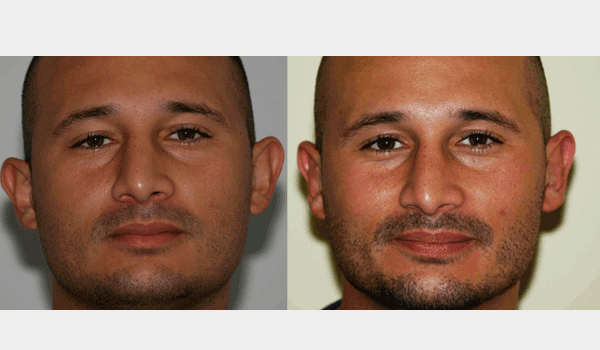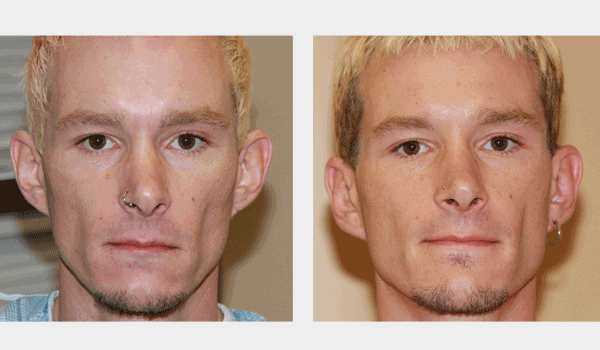Are you bothered by the size or shape of your ears? Do you try and hide them by covering them with your hair? Prominent ears can cause unwanted attention, or patients may simply not prefer the shape or size of their ears. If so, ear surgery, also known as otoplasty (pronounced Oh-Toe-Plasty), may be the right decision for you. Ear surgery can significantly change the shape of your ear, the size of the ear, how much it protrudes from your head, and the size/positioning of the earlobe.
The ear has four main anatomical components that we consider when evaluating the patient. The helix is the outer rim of the ear. The inside ridge of the helix is the anti-helix. The concha forms the cup of the ear that leads to the ear canal, and the lobule (earlobe) is the fleshy part of the ear at the bottom that is classically used for piercing.

Prominent ears can have a deformity of one, two, or all four components.
Ear Surgery – The Procedure
Ear surgery performed by Dr. Schneider is designed in a way that the incisions are hidden. This otoplasty technique allows for a beautiful reshaping of the outer ear components.
The ear surgery allows Dr. Schneider to reshape or re-bend the anti-helix, reduce the size or prominence of the concha, shrink or adjust the size or protrusion of the lobule, and repair torn or partially torn earlobes. Most patients report that there is minimal discomfort following their surgery.
In fact, Dr. Schneider performed an otoplasty on his own son who was then able to return to school the same week.
The ear surgery is performed as an outpatient in our AAAHC certified surgery center and takes about one hour to perform. It may be performed with sedation, or in some appropriate cases, just with a local anesthetic. Following the procedure, patients are able to go home. Typically, most patients are comfortable going back to school or work within several days following the ear surgery procedure.











